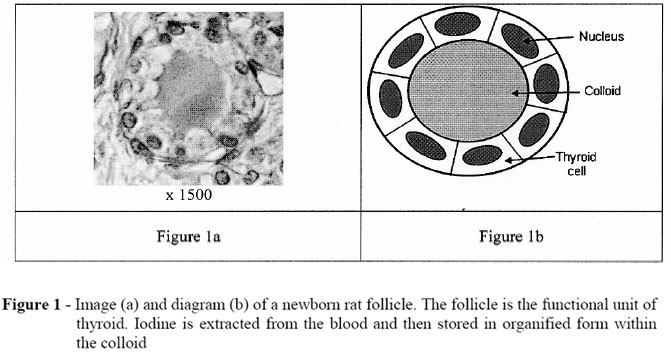The most significant impact of the Chernobyl accident is the increased incidence of thyroid cancer among children who were exposed to short-lived radioiodines and 131-iodine. In order to accurately estimate the radiation dose provided by these radioiodines, it is necessary to know where iodine is incorporated. To do that, the distribution at the cellular level of newly organified iodine in the immature rat thyroid was performed using secondary ion mass microscopy (NanoSIMS50). Actual dosimetric models take only into account the averaged energy and range of beta particles of the radio-elements and may, therefore, imperfectly describe the real distribution of dose deposit at the microscopic level around the point sources. Our approach is radically different since based on a track-structure Monte Carlo code allowing following-up of electrons down to low energies (~ 10eV) what permits a nanometric description of the irradiation physics. The numerical simulations were then performed by modelling the complete disintegrations of the short-lived iodine isotopes as well as of 131I in new born rat thyroids in order to take into account accurate histological and biological data for the thyroid gland.
Thyroid; iodine radioisotopes; Monte Carlo simulation; cellular dosimetry










